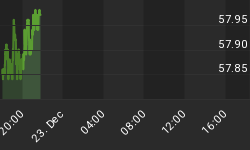Throughout the 20th century Mongolia was one of the poorest countries in Asia. The country lacked critical infrastructure, ranging from power generation to rails and roads capable of linking the country together. It has also been a political pawn, historically transfixed between Russia to the north and China to the south. Yet in the deep past, Mongolia was a world power giving birth to Genghis Khan, whose sons and grandsons were to rule China, Siberia, Central Asia, and parts of Europe and the Middle East. In the early 21st century Mongolia is again on the move, a development that has important consequences for the rest of Asia.
The new Mongolian move is not one based on arrow-firing warriors crossing long distances with shaggy ponies; rather it is the emerging of this country of 3 million people as one of the world's leading mineral exporters. For a world hungry for commodities, Mongolia can fill that order. A recent BBC article stated: "Mongolia has virtually every desirable mineral resource. Gold, copper, coal, uranium, iron ore and oil lie below the earth of this huge landlocked nation".¹ And Mongolia sits north of the China, which has become the world's workshop, a machine that constantly requires natural resources.
The challenge for Mongolia and those that want to extract the country's mineral wealth is infrastructure. Currently the country is hugely lacking in the extensive road and rail system required. The Soviet-era and built trans-Mongolian railway is the only significant rail artery in the country. It also lacks a well-educated workforce to take advantage of the looming boom and how to eventually manage that wealth. A third of the population is nomadic and depends on livestock for a living. Education facilities are rudimentary. Although the political system is democratic, there remains a considerable amount of patronage built in. The coming wave of wealth is going to be a major test for Mongolia.
Yet, Asia needs to pay attention to Mongolia. The government is in the process of advancing the creation of an "east-west" railroad, much along the lines of Russia's Siberian Express or the U.S. and Canadian rail systems established in the second half of the nineteenth century. The plan thus far is for six rail lines totaling 1,888km starting construction this year. This would be followed in 2011 by an additional project totaling 1,400km and after 2025 another 2,000km.
Mongolia has already attracted Rio Tinto and Ivanhoe Mines to develop and export copper and gold. As the development of a national rail and road network develops, more multinational mining companies are going to be heading to Mongolia. As more companies set up operations deep in Asia, Mongolia will have an increasingly weightier role to play in global commodity markets, something that will deepen the development of a North Asian regional economy that is in the process of being more integrated between China, Russia, Korea and Japan.
The last point is worth further comment. Asia is changing. It has been changing for a while, but in the 21st century the process of continental integration is accelerating with a wide range of road and rail projects. The Economist (April 10th 2010) observed: "For much of the 20th century the three powers of the Asian land mass, China, India and the former Soviet Union, bothered little with international exchange, and transcontinental development was derisory. That is now changing." Clearly, Mongolia with its extensive borders with Russia and China and wealth of minerals resources sits in what is likely to emerge as an important geo-economic hub. Mongolia may be able to regain some of its former glory.
Mongolia is going to represent a major market opportunity for investors in the upcoming years. It carries considerable risk, but the demand for the commodities beneath the country's top soil is something that will draw capital. This spot is worth watching.
¹ Linda Pressly, "Mongolia on Verge of Mineral Boom", BBC World News, April 7, 2010
















